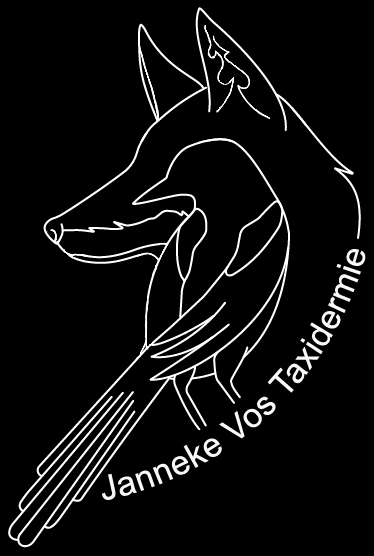***NEDERLANDS BENEDEN / DUTCH BELOW***
What to do when you found a dead animal you want to keep for taxidermy:
The transport declaration that could be obtained from the police station is no longer necessary with the start of the new Nature Conservation Act from 1st of January 2017 onwards.
You can now take the animal directly to the taxidermist of your choosing. This taxidermist will further handle the administration of the animal. For this administration, the taxidermist needs your details (your full name and address). If it concerns a bird from the wild, this data will be entered into a digital RVO system paired with the scientific species name, the location of the bird and the (possible) cause of death. According to the Nature Conservation Act, this must be done within 3 days of finding the bird. The bird is given a tag with a unique registration number that allows an inspector to trace who taxidermized the animal and whether the correct procedure was followed.
Rotting process
An animal is spoiled when:
• you gently pull the feathers/hairs (for example on the belly) and they get easily pulled out;
• you gently rub the eyelid with a finger and the feathers/hairs loosen;
• the animal clearly emits a ‘rotting’ odor.
Storage
You should store the dead animal in a freezer, preferably not with consumer goods considering hygiene. Place the animal in a plastic bag (without paper towels or newspaper – the ink will stain the fur and feathers!) that can be closed properly. For example, the zip-lock bags with ‘pressure ridges’. Enclose as little air as possible. The animal can be stored in a freezer like this for decades.
***Nederlands***
Wat te doen wanneer je een dood dier vind die je wilt bewaren voor taxidermie:
De vervoersverklaring die te verkrijgen was bij het politiebureau is met de inwerkingtreding van de Wet natuurbescherming per 1 januari 2017 niet meer nodig.
U kunt nu rechtstreeks met het te prepareren dier naar de preparateur van uw keuze gaan. Deze preparateur zal de administratie rond het dier verder afhandelen. Hij of zij heeft hiervoor uw gegevens nodig (volledige naam en adres). Indien het een uit het wild afkomstige vogel betreft, zullen deze gegevens samen met de soortnaam van de te prepareren vogel, de vindplaats en de (mogelijke) doodsoorzaak in een digitaal systeem van RVO worden ingevoerd. Dit moet volgende de wet natuurbescherming nog altijd binnen 3 dagen na de vondst van de vogel gebeuren! De vogel krijgt een merkteken met een uniek nummer waaraan een controleur kan herleiden wie het dier heeft geprepareerd en of de juiste procedure is gevolgd.
Bederf
Een dier is bedorven als:
• u voorzichtig aan de veertjes/haren (bijv. op de buik) trekt en deze laten los;
• u zachtjes met een vinger langs een ooglid wrijft en de veren/haren laten los;
• het dier duidelijk een ‘rottende’ geur afgeeft.
Bewaren
U dient het dode dier in een vriezer te bewaren, echter bij voorkeur niet bij consumptiegoederen i.v.m. hygiëne. Stop het dier in een plastic zak (zonder papier of kranten – de inkt geeft af op vacht en veren!) welke goed afsluitbaar is, bijvoorbeeld de zogenaamde Ziplock-zakken met ‘drukribbels’. Sluit zo min mogelijk lucht in. Het dier is op deze manier tientallen jaren te bewaren.

